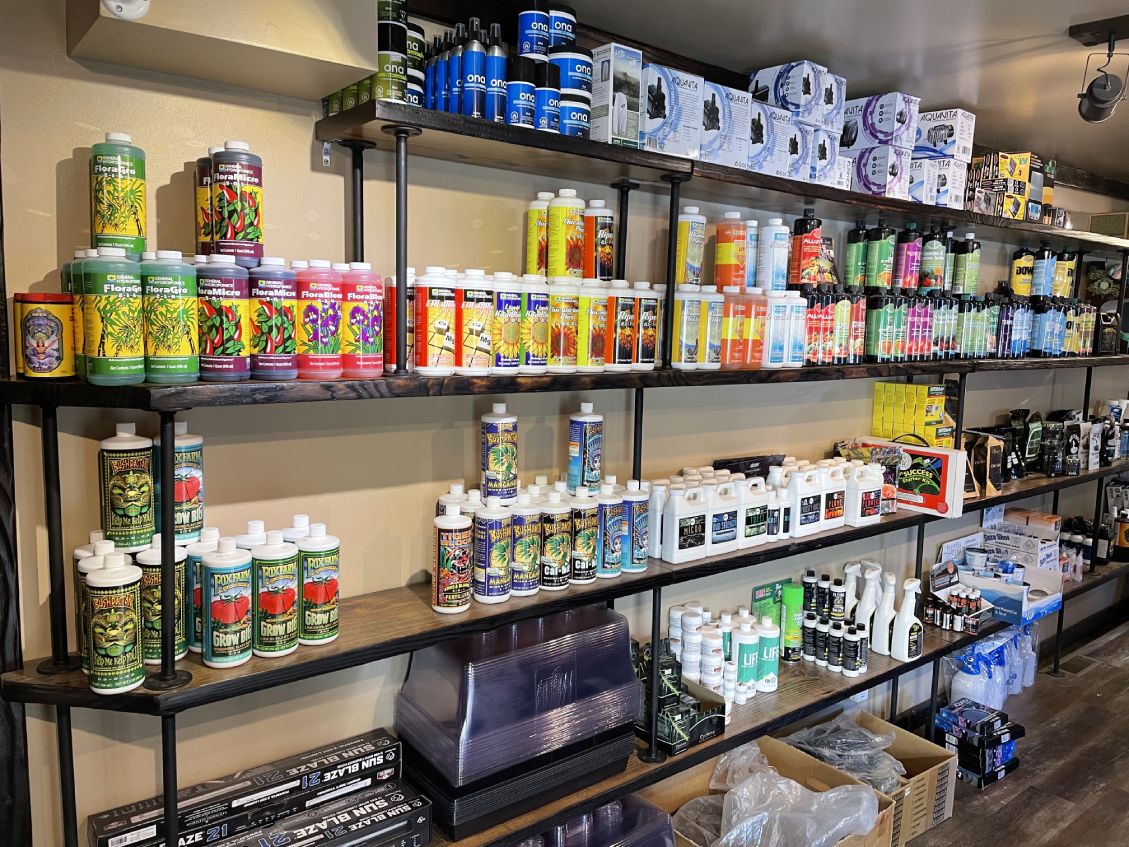Using the Power of Hydroponics: a Deep Study Makes Use Of and Different Kinds
In the world of contemporary farming, hydroponics has become an approach that challenges standard farming practices by using a water-efficient and space-saving option. The usage of hydroponic systems opens a world of possibilities for cultivating plants in varied environments, eventually impacting food production and sustainability. As we browse with the detailed landscape of hydroponics, exploring its numerous types and applications, a much deeper understanding of its potential to change farming techniques and address international food protection issues begins to unravel.
Advantages of Hydroponic Farming
Undoubtedly, the advantages of hydroponic farming are becoming significantly recognized in contemporary agricultural techniques. Hydroponic farming supplies many advantages over typical soil-based agriculture. Among the key benefits is water effectiveness; hydroponic systems utilize up to 90% much less water contrasted to traditional farming approaches. This reduction in water usage is crucial in combating water scarcity problems around the world.
Moreover, hydroponic farming allows for higher control over nutrient degrees, resulting in faster plant development and higher returns. By giving important nutrients directly to the plant origins, hydroponic systems promote healthier and a lot more durable plant advancement. In addition, the controlled atmosphere of hydroponic systems lessens the threat of illness and parasites, reducing the need for hazardous pesticides and herbicides.

Common Sorts Of Hydroponic Solutions
Offered the numerous benefits of hydroponic farming, it is vital to discover the numerous usual kinds of hydroponic systems used in modern-day agriculture. One prevalent type is the Deep Water Culture (DWC) system, where plant roots are submerged in a nutrient remedy. An additional typical system is Nutrient Film Strategy (NFT), which entails a thin film of nutrient-rich water flowing over the roots - The Indoor Earthworm. The Ups and downs system, likewise referred to as Flood and Drainpipe, occasionally floodings the plant roots with nutrient service before draining it. Aeroponics stands apart for its method of putting on hold plant origins airborne and misting them with a nutrient option. Trickle systems provide a managed quantity of nutrient service directly to the plant's base. Wick systems, the most basic kind of hydroponics, utilize a wick to passively provide nutrient remedy to the plant origins. Each of these systems provides and offers unique benefits to different plant types and development stages in hydroponic agriculture.
Nutrient Film Method (NFT) System

One of the key advantages of the NFT system is its water efficiency. The Indoor Earthworm. Considering that the nutrient option is recirculated in a closed system, this method makes use of significantly less water contrasted to typical soil farming. Furthermore, the NFT system view it now is space-efficient, making it optimal for interior farming or in areas with restricted area for conventional agriculture
However, the NFT system calls for mindful surveillance and upkeep to make certain the continual circulation of water and nutrients. Any type of disruption in the circulation can swiftly affect plant wellness. Overall, the NFT system provides a sustainable and effective means to expand plants hydroponically, specifically for crops that prosper in well-oxygenated origin environments.
Deep Water Culture (DWC) System
Moving from the Nutrient Film Method (NFT) click to read more system, the Deep Water Society (DWC) system is a hydroponic method that includes putting on hold plant roots directly in a nutrient solution. Unlike NFT, where roots are continuously exposed to a thin film of nutrient remedy, DWC plants have their roots immersed in a reservoir filled with aerated vitamins and mineral water. The origins dangle in the nutrient remedy, permitting straight uptake of water and essential nutrients.
Among the vital benefits of the DWC system is its simplicity and low maintenance demands. The continuous accessibility to oxygen and nutrients promotes rapid growth and greater yields. DWC systems call for sufficient aeration to prevent origin rot and make sure optimum nutrient absorption. Normal tracking of pH degrees and nutrient focus is critical to stop imbalances that can harm plant health and wellness.
Aeroponic System
A cutting-edge method in hydroponics growing, the Aeroponic System utilizes a fogging or misting system to deliver nutrients straight to plant roots suspended in the air. This system is recognized for its capacity to promote rapid development and reliable nutrient uptake due to the direct delivery of nutrients to the origins, enabling the plant to concentrate its power on growth rather than looking for nutrients.
One of the essential advantages of aeroponics is its water performance, as the system utilizes significantly much less water contrasted to traditional soil-based cultivation approaches. Additionally, the specific distribution of nutrients directly to the roots can lead to higher returns and faster development prices. While aeroponics can be a lot more intricate to set up and preserve contrasted to various other hydroponic systems, its capacity for raised plant development and efficiency makes it a prominent selection for hydroponic fanatics and business farmers seeking optimal results.
Conclusion
Finally, hydroponic farming supplies many benefits and various kinds of systems to pick from. The Nutrient Movie Technique (NFT) system, Deep Water Culture (DWC) system, and Aeroponic system are among the most common techniques utilized in hydroponics. Each system has its own benefits and limitations, making it important for farmers to carefully consider their requirements Web Site and choices prior to picking the most ideal system for their crops.
Unlike other hydroponic systems where plants are immersed in a nutrient solution, in the NFT system, the roots are revealed to the water only in a shallow movie.Moving from the Nutrient Movie Technique (NFT) system, the Deep Water Culture (DWC) system is a hydroponic approach that includes putting on hold plant roots straight in a nutrient service.An ingenious method in hydroponics farming, the Aeroponic System uses a fogging or misting system to supply nutrients straight to plant origins suspended in the air. The Nutrient Film Method (NFT) system, Deep Water Culture (DWC) system, and Aeroponic system are amongst the most common approaches utilized in hydroponics. Each system has its own benefits and limitations, making it crucial for farmers to carefully consider their needs and choices prior to picking the most suitable system for their crops.